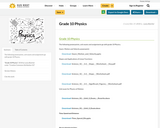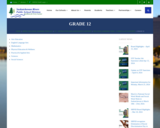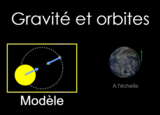
The following powerpoints, unit exams and assignments go with grade 10 Physics.
- Subject:
- Physics
- Science
- Material Type:
- Activity/Lab
- Homework/Assignment
- Date Added:
- 10/17/2018

The following powerpoints, unit exams and assignments go with grade 10 Physics.

This comprehensive resource from Saskatchewan Rivers Public School Division includes units of study plus curricular and assessment resources for Grade 12 Arts Education, ELA, Physical Education and Wellness, Practical and Applied Arts, Mathematics, Sciences and Social Studies. Look for rubrics, unit plans, sample year plans (and templates), Treaty Education outcomes and indicators as well lots of other teacher resources. Some of the information is not available as a login is required.

This lesson introduces the MRI Safety Grand Challenge question. Students are asked to write journal responses to the question and brainstorm what information they will need to answer the question. The ideas are shared with the class and recorded. Students then watch a video interview with a real life researcher to gain a professional perspective on MRI safety and brainstorm any additional ideas. The associated activity provides students the opportunity to visualize magnetic fields.

Students are introduced to the Robotics Peripheral Vision Grand Challenge question. They are asked to write journal responses to the question and brainstorm what information they require to answer the question. Their ideas are shared with the class and recorded. Then, students share their ideas with each other and brainstorm any additional ideas. Next, students draw a basis for the average peripheral vision of humans and then compare that range to the range of two different focal lengths in a camera. Through the associated activity provides, students see the differences between human and computer vision.

In this activity, students work in groups to create a presentation that illustrates the meaning of the statement "To make an apple pie from scratch you must first invent the universe." Students pick an element that can be found in apple pie and trace its evolutionary history back to the birth of the universe itself. They also share their vision of the environment in which that element may find itself 5 or so billion years from now after the Earth is long gone. Presentations are intended to demonstrate student understanding of the origins and life cycle of matter, so this activity is appropriate as a conclusion to a unit. This activity is part of the "What is Your Cosmic Connection to the Elements" information and activity booklet. The booklet includes teacher notes, grading guide and student handouts.

The students will be able to identify questions and concepts in the ability to construct accurate graphs, recognize and analyze alternative explanations and models by the end of this activity.

This is an activity about the relation between day length and temperature. In one team, learners will create and analyze a graph of hours of sunlight versus month of the year for a number of latitudes. In another team, learners will graph temperature versus month for the same latitudes. The teams then compare data and draw conclusions from their analyses.

This is a lesson about visual spectra. Learners will explore different ways of displaying visual spectra, including colored "barcode" spectra, like those produced by a diffraction grating, and line plots displaying intensity versus color, or wavelength. Students learn that a diffraction grating acts like a prism, bending light into its component colors. The activity is part of Project Spectra, a science and engineering program for middle-high school students, focusing on how light is used to explore the Solar System.

Students are introduced to different ways of displaying visual spectra, including colored "barcode" spectra, like those produced by a diffraction grating, and line plots displaying intensity versus color, or wavelength. Students learn that a diffraction grating acts like a prism, bending light into its component colors.

Une série de simulations provenant de l’Université de Colorado à Boulder pour les 9e – 12e au sujet des sciences.
« Déplacez le soleil, la Terre, la lune et la station spatiale pour observer comment cela affecte leurs forces gravitationnelles et leurs trajectoires orbitales. Visualisez les tailles et les distances entre différents corps célestes, et désactivez la gravité pour voir ce qui se passerait sans elle ! »

Students use water balloons and a length of string to understand how the force of gravity between two objects and the velocity of a spacecraft can balance to form an orbit. They see that when the velocity becomes too great for gravity to hold the spacecraft in orbit, the object escapes the orbit and travels further away from the planet.

Students learn about weight by building a spring scale and observing how it responds to objects with different masses.

In this hands-on activity, learners will build a solar cooker by lining a box with reflective material and adding a translucent cover. The cooker can be used to make food products. This activity recommends use of empty (clean) pizza boxes. This activity requires a sunny outdoor location for an extended period of time.

Cycles are a big deal in engineering. Today we’ll explain what they are and how they’re used in heat engines, refrigerators, and heat pumps. We’ll also discuss phase diagrams and the power of using renewable energy resources

Through a teacher demonstration using water, heat and food coloring, students see how convection moves the energy of the Sun from its core outwards. Students learn about the three different modes of heat transfer (convection, conduction, radiation) and how they are related to the Sun and life on our planet.

Today we’re talking about heat transfer and the different mechanisms behind it. We’ll explore conduction, the thermal conductivity of materials, convection, boundary layers, and radiation.

Students learn the fundamental concepts of heat transfer and heat of reaction. This includes concepts such as physical chemistry, an equation for heat transfer, and a basic understanding of energy and heat transfer.

Students explore heat transfer and energy efficiency using the context of energy efficient houses. They gain a solid understanding of the three types of heat transfer: radiation, convection and conduction, which are explained in detail and related to the real world. They learn about the many ways solar energy is used as a renewable energy source to reduce the emission of greenhouse gasses and operating costs. Students also explore ways in which a device can capitalize on the methods of heat transfer to produce a beneficial result. They are given the tools to calculate the heat transferred between a system and its surroundings.

Heat transfer is an important concept that is a part of everyday life yet often misunderstood by students. In this lesson, students learn the scientific concepts of temperature, heat and the transfer of heat through conduction, convection and radiation. These scientific concepts are illustrated by comparison to magical spells used in the Harry Potter stories.

Students discover the scientific basis for the use of inclined planes. Using a spring scale, a bag of rocks and an inclined plane, student groups explore how dragging objects up a slope is easier than lifting them straight up into the air. Also, students are introduced to the scientific method and basic principles of experimentation. To conclude, students imagine and design their own uses for inclined planes.